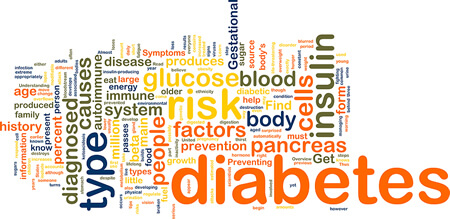A new research report published in the October 2015 issue of the Journal of Leukocyte Biology, suggests that the endoplasmic reticulum plays a more important role in type 2 diabetes and its complications than previously believed. Specifically, when this cell compartment undergoes disruptions (stress) patients experienced poor glycemic control, dyslipidemia, insulin resistance and inflammatory and oxidative stress. Targeting ER stress might be an effective treatment strategy for type 2 diabetes.
“In a way, we observed a ‘disharmonious stress signaling alliance’ in diabetes,” said Muthuswamy Balasubramanyam, a senior researcher and disease-biologist involved in the work from the Madras Diabetes Research Foundation in Chennai, India. “The future of potential practical applications of our research is that this would lead to the development of ‘chemical chaperones’ as a new generation class of anti-diabetic agents that should improve ER folding capacity, help to stabilize protein conformation and ameliorate ER stress,” he added.
To make their discovery, scientists identified several endoplasmic reticulum stress markers increased in cells from patients with type 2 diabetes as compared to healthy control subjects.
These endoplasmic reticulum stress markers also correlated significantly and positively with poor glycemic control, dyslipidemia, insulin resistance and inflammatory and oxidative stress markers. In addition, the scientists found that one of the microRNAs called “miR-146a” (which is supposed to regulate inflammatory responses) was also impaired and negatively correlated to endoplasmic reticulum stress and inflammation in patients with diabetes.
“In an increasing number of diseases we are finding links between stress and inflammation,” said John Wherry, Ph.D., Deputy Editor of the Journal of Leukocyte Biology. “There has also been great work in being able to translate the vague notions of stress, the way we think about it non-scientifically, into true molecular events associated with physiological changes in tissues and cell. This work represents an interesting advance in thinking about how to use that molecular knowledge to develop possible molecular targets for reducing stress, inflammation and ameliorating disease.”
###
 The Journal of Leukocyte Biology publishes peer-reviewed manuscripts on original investigations focusing on the cellular and molecular biology of leukocytes and on the origins, the developmental biology, biochemistry and functions of granulocytes, lymphocytes, mononuclear phagocytes and other cells involved in host defense and inflammation. The Journal of Leukocyte Biology is published by the Society for Leukocyte Biology.
The Journal of Leukocyte Biology publishes peer-reviewed manuscripts on original investigations focusing on the cellular and molecular biology of leukocytes and on the origins, the developmental biology, biochemistry and functions of granulocytes, lymphocytes, mononuclear phagocytes and other cells involved in host defense and inflammation. The Journal of Leukocyte Biology is published by the Society for Leukocyte Biology.
Details: Raji Lenin, Aravind Sankaramoorthy, Viswanathan Mohan, and Muthuswamy Balasubramanyam. Altered immunometabolism at the interface of increased endoplasmic reticulum (ER) stress in patients with type 2 diabetes. J. Leukoc. Biol. October 2015 98:615-622; doi:10.1189/jlb.3A1214-609R ; http://www.jleukbio.org/content/98/4/615.abstract
###
Cody Mooneyhan
.(JavaScript must be enabled to view this email address)
301-634-7104
###
FEDERATION OF AMERICAN SOCIETIES FOR EXPERIMENTAL BIOLOGY